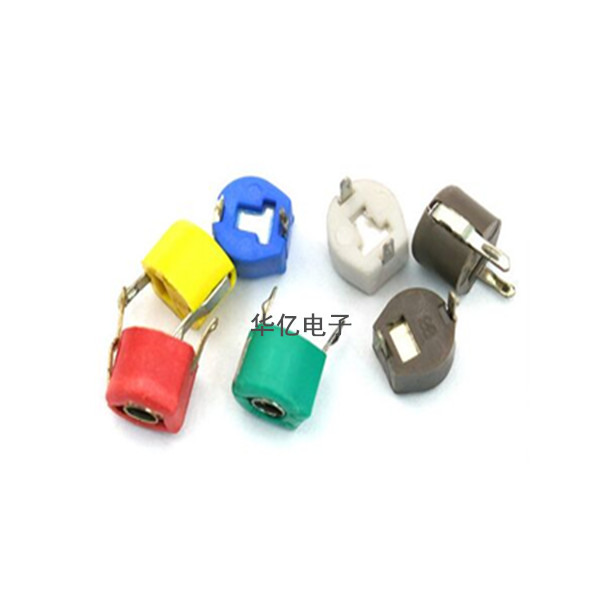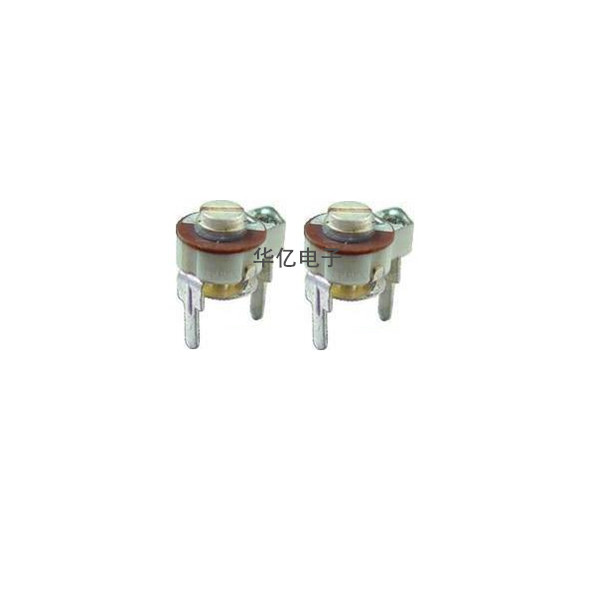Calculation formula: The resistance of the potentiometer can be calculated using the following formula: potentiometer resistance=(resistance from the sliding arm position opening to both ends of the potentiometer)/(total resistance value). Among them, "total resistance value" refers to the resistance connected externally at both ends of the potentiometer, while "resistance from the sliding arm position opening to both ends of the potentiometer" refers to the resistance value corresponding to the sliding arm position of the potentiometer.
2. The expression method of potentiometer resistance:
Direct labeling method: Label the resistance value directly on the casing of the potentiometer, such as "10k Ω".
Color ring labeling method: Use different colored color rings on the resistor body of the potentiometer to represent the resistance value. For example, the first two color rings of a four-color ring potentiometer represent the first two digits of the resistance value, the third color ring represents a multiple of the resistance value, and the fourth color ring represents accuracy.
Coding annotation method: Use numerical coding on the casing of the potentiometer to represent the resistance value, such as "B10K" indicating a resistance value of 10 kiloohms with an accuracy of ± 0.1%.
3. Choose the appropriate potentiometer resistance:
Load size: It is usually more appropriate to choose a resistance value that is less than 5 times the load. The probability of a potentiometer with a resistance of 1-5K malfunctioning is relatively low.
Circuit requirements: Select the appropriate resistance range according to the circuit requirements, such as 0-10k Ω, 1-50k Ω, etc. At the same time, select the appropriate potentiometer accuracy according to the accuracy requirements of the circuit, such as ± 1%, ± 0.1%, etc.
Power requirement: Select the appropriate potentiometer power according to the power requirement of the circuit, such as 0.25W, 1W, etc.
Material selection: Choose appropriate potentiometer materials based on the working environment and requirements of the circuit, such as carbon film, metal film, conductive plastic, etc.
Shape and size: Choose the appropriate potentiometer shape and size based on the installation space and requirements of the circuit.
The selection of potentiometer resistance value depends on the load size of the potentiometer. Generally, the potentiometer resistance value is selected for the load; A potentiometer with a resistance of about 5 times is more suitable. The probability of failure is small when using a potentiometer with a resistance of 1-5K. The size of the resistor will affect the load current of the power supply, and the pressure of the switch power supply will also be affected. If the resistor is too small, it will affect the input voltage division and shunt of the signal terminal in the analog circuit, resulting in poor linear adjustment. According to Ohm's law: resistance R=U/I, the resistance range of the potentiometer can be calculated under known voltage and current conditions. However, if the current in the analog circuit is too high, it will cause excessive power loss. For example, if the voltage is 10V and the current is 3mA, the resistance of the potentiometer can be calculated to be between 3.3-10K.
When selecting a potentiometer, it is also important to choose the corresponding resistance change characteristics based on its purpose. For example, for volume control potentiometers, exponential potentiometers should be selected. In the absence of exponential potentiometers, linear potentiometers can be used instead, but logarithmic potentiometers cannot be used, otherwise the range of volume adjustment will be reduced. Linear potentiometers should be used for voltage division, and logarithmic potentiometers should be used for tone control.







